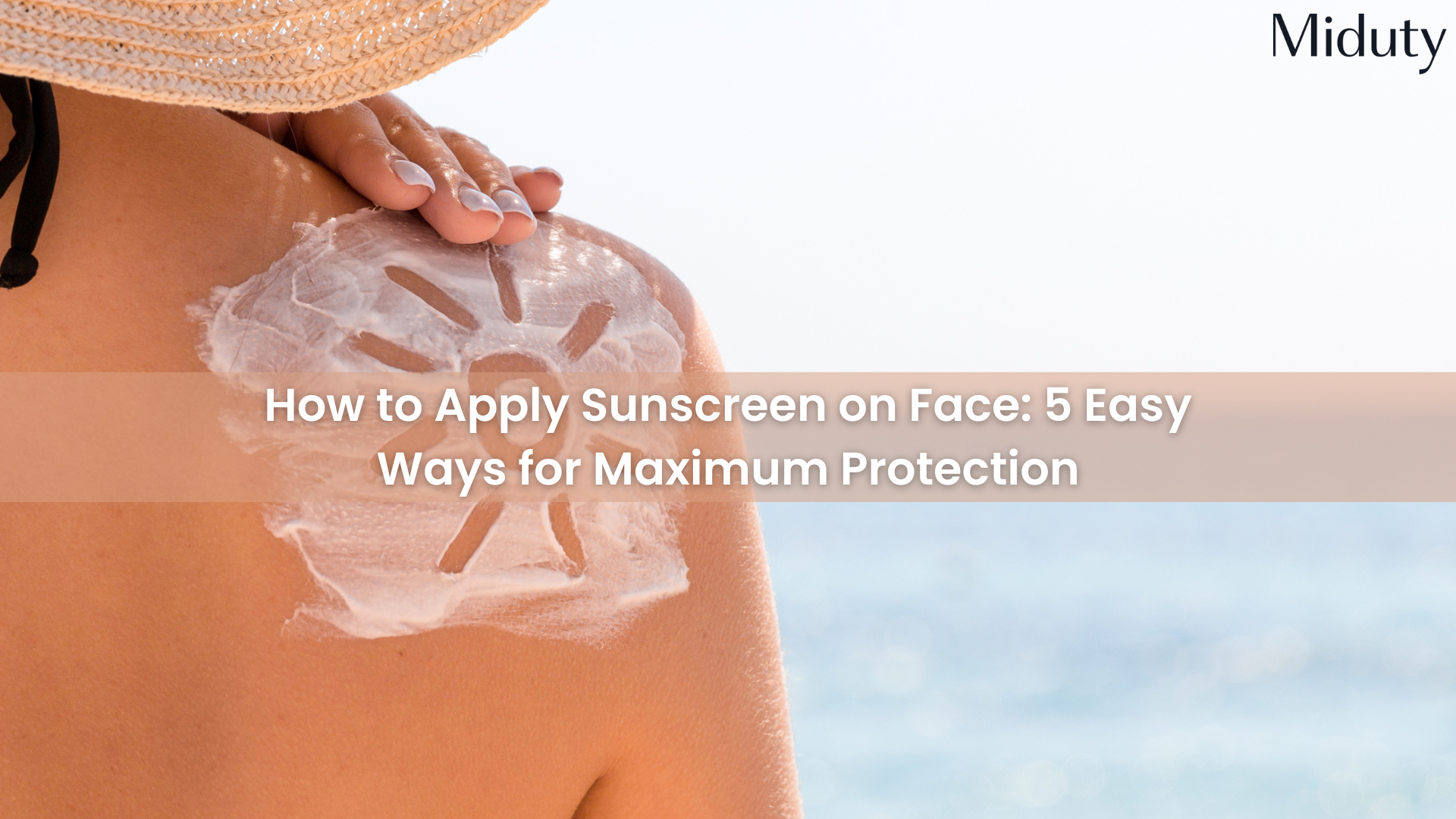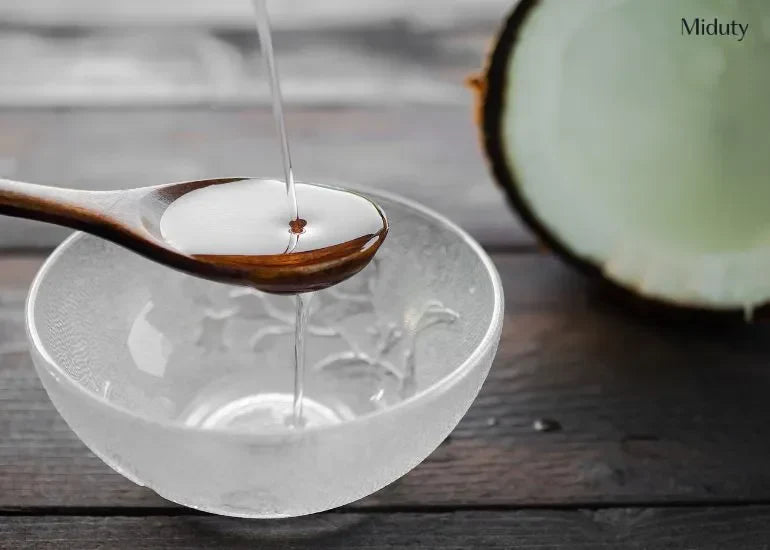
How to Apply Sunscreen on Face? : 5 Easy Ways for Maximum Protection
Why Sunscreen is Essential? | 5 Easy Ways to Apply | When to Apply? | Types of Sunscreen | Tips for Skin Types | Conclusion | FAQs | References
Key Takeaways:
- Overexposure to UVA and UVB rays can cause skin cancer. Sunscreens labeled as "broad spectrum" help protect against the effects of both UVA and UVB rays.
- The "Teaspoon and Shot Glass Rule" advises using one teaspoon of sunscreen for the face and neck and one ounce for all other exposed body areas. [1]
- Skin cancer also can form on the lips. To protect your lips, apply a lip balm or lipstick that contains sunscreen with an SPF of 30 or higher. [2]
- It is not advisable to use sunscreen on babies younger than 6 months, if possible.

We all understand the significance of sunscreen in our skincare regimen. However, mastering the art of its application can sometimes feel like a puzzling task. Whether you find yourself indoors or outdoors, being well-versed in the correct application of sunscreen on your face is paramount for full protection against harmful UV rays.
In this blog, we will delve into the art of properly applying sunscreen on your face, address common queries, and offer you five ingenious ways to ensure your skin is shielded.
Why Sunscreen is Essential for Your Skin?
Before learning how to apply sunscreen, it's important to understand why sunscreen should be a non-negotiable step in your skincare routine. UV rays from the sun can cause premature aging, sunburns, and even increase the risk of skin cancer. [3]
Applying sunscreen daily forms a barrier that protects your skin from these harmful effects, no matter the weather.
5 Easy Ways on How to Apply Sunscreen on Face

Let's get into the main question: how to apply sunscreen on your face for maximum protection. By following these five easy methods, you'll ensure that you're getting the full benefits of your sunscreen. [4]
1. Cleanse and Moisturize First
The first step in your routine is always to start with a clean face. Sunscreen should be applied to a fresh canvas on your skin to ensure proper absorption. Use a gentle cleanser suited to your skin type to remove any dirt, oil, or makeup from your face.
Once your face is clean, apply your moisturizer. Many people wonder, "Can we apply sunscreen directly on the face?" While you can, applying a moisturizer first helps lock in hydration and gives your skin a smooth base, making it easier for the sunscreen to spread evenly.
How to use sunscreen on the face after moisturizer: Wait a few minutes for your moisturizer to sink in before applying sunscreen. This allows both products to work effectively without interfering with each other.
2. Apply Sunscreen in Sections
One common mistake people make is applying too little sunscreen or applying it unevenly. To avoid this, try dividing your face into sections—forehead, nose, cheeks, and chin. This ensures that every part of your face gets the coverage it needs.
When asked "How much sunscreen to apply on the face?" A good rule of thumb is to use about half a teaspoon of sunscreen for your face alone. This might sound like a lot, but applying less than the recommended amount can reduce the effectiveness of your sunscreen.
3. Use Patting Motions Instead of Rubbing

After squeezing out the correct amount of sunscreen, the way you apply it matters. Instead of rubbing it into your skin (which can sometimes cause the sunscreen to clump or wear off quickly), try using patting motions.
Gently pat the sunscreen onto your skin, focusing on areas that are often missed, like the hairline, sides of the nose, and under the chin.
How to use sunscreen is not just about getting the right amount but also about ensuring it stays effective throughout the day.
4. Don't Forget Your Neck and Ears
When talking about how to apply sunscreen on your face, it's easy to overlook the areas around your face that are just as exposed to the sun. Your neck, ears, and even the back of your neck are vulnerable to UV rays, so make sure you extend your sunscreen application to these areas as well.
Apply sunscreen to the back of your ears, especially if your hair is tied up, and don't forget the sides of your neck.
5. Reapply Every 2 Hours
Another key point in understanding how to apply sunscreen is knowing when to reapply. Sunscreen doesn't last all day. As a rule, you should reapply sunscreen every two hours if you're outdoors, sweating, or swimming. For daily wear indoors, one application in the morning might suffice, but if you're exposed to sunlight through windows or step outside, it's always a good idea to reapply.
For easy reapplication, consider using a spray sunscreen or a powder-based sunscreen. These products make it quick and convenient to add another layer of protection without disrupting your makeup or skincare routine.
When to Apply Sunscreen in Your Routine?
The order you use your skincare products matters.
So, when to apply sunscreen?
Sunscreen should be the last step in your morning skincare routine. This means you should apply it after your moisturizer and before any makeup. Remember, sunscreen creates a protective layer, so you want it on top of your skin, not under other products. [5]
For the best protection, apply your sunscreen 15 to 30 minutes before sun exposure to allow it to fully absorb into your skin.
The Types of Sunscreen You Can Use

Not all sunscreens are the same, and understanding which one is best for you is crucial to ensuring proper protection.
Here's a quick rundown of the types of sunscreens and when they work best:
- Chemical Sunscreens: These absorb UV rays and turn them into heat. They're generally lightweight and invisible on the skin, making them great for everyday use. However, you need to apply them at least 20 minutes before sun exposure for them to work.
- Physical Sunscreens (Mineral Sunscreens): These reflect UV rays and act as a barrier on top of the skin. They tend to leave a slight white cast, but they start working immediately after application. Ideal for those with sensitive skin, mineral sunscreens are less likely to irritate.
Both types work well, but be sure to choose a broad-spectrum sunscreen with an SPF of at least 30.
Also Read: Side Effects of Sunscreen: What You Should Be Aware Of?
Sunscreen Tips for Specific Skin Types

Oily Skin
If you have oily skin, opt for a gel-based or oil-free sunscreen that won't clog your pores. Look for non-comedogenic sunscreens that won't cause breakouts and will give you a matte finish.
Dry Skin
For dry skin, a moisturizing sunscreen that contains hydrating ingredients like hyaluronic acid or glycerin works best. This will help lock in moisture and prevent your skin from drying out in the sun.
Sensitive Skin
Sensitive skin types should stick to physical (mineral) sunscreens that contain zinc oxide or titanium dioxide. These ingredients are gentle on the skin and less likely to cause irritation or allergic reactions.
|
Skin Type |
Recommended Sunscreen Type |
Benefits |
|
Oily Skin |
Gel-based or oil-free sunscreen |
Non-comedogenic prevents clogging pores and provides a matte finish |
|
Dry Skin |
Moisturizing sunscreen with hyaluronic acid |
Hydrates and locks in moisture, preventing skin from drying out in the sun |
|
Sensitive Skin |
Mineral sunscreen with zinc oxide or titanium dioxide |
Gentle on the skin, less likely to cause irritation or allergies |
Conclusion
Learning how to apply sunscreen on your face correctly is one of the most important steps in keeping your skin healthy and youthful. Whether you're wondering how much sunscreen to apply on face or when to apply sunscreen during your routine, following the tips outlined above ensures that you're fully protected from the sun's harmful rays.
Don't skip your sunscreen—make it a daily habit, and your skin will thank you for years to come! Whether you prefer chemical or physical sunscreens, always choose a broad-spectrum product with SPF 30 or higher and reapply throughout the day. Proper sunscreen application isn't just about slathering it on; it's about using the right amount, covering all areas, and reapplying when needed.
Incorporate these easy steps into your skincare routine and enjoy healthy, glowing skin that stays protected from the sun year-round.

Frequently Asked Questions on How to Apply Sunscreen on Face -
Q1. Can we apply sunscreen directly on our face?
Yes, you can apply sunscreen directly to your face. However, it's often better to apply it after your moisturizer for optimal hydration and protection. The moisturizer will help prevent your skin from feeling too dry or greasy after applying sunscreen.
Q2. How much sunscreen to apply on your face?
Experts recommend using about half a teaspoon of sunscreen for your face. If you're unsure, start with a smaller amount and build up to make sure you have enough coverage.
Q3. How to use sunscreen on your face if you wear makeup?
You can easily apply sunscreen under makeup by using a lightweight, non-greasy sunscreen formula. Make sure to give your sunscreen a few minutes to absorb before applying foundation or powder on top. You can also find sunscreens that double as primers, which makes makeup application smoother.
Q4. How many minutes between moisturizer and sunscreen?
During the day, apply sunscreen as the final step in your routine, at least 15 minutes before going outside, after your moisturizer has been absorbed.
Q5. Does sunscreen make skin glow?
Consistent use of sunscreen can minimize the visible signs of aging and promote a smoother, more radiant complexion over time.









